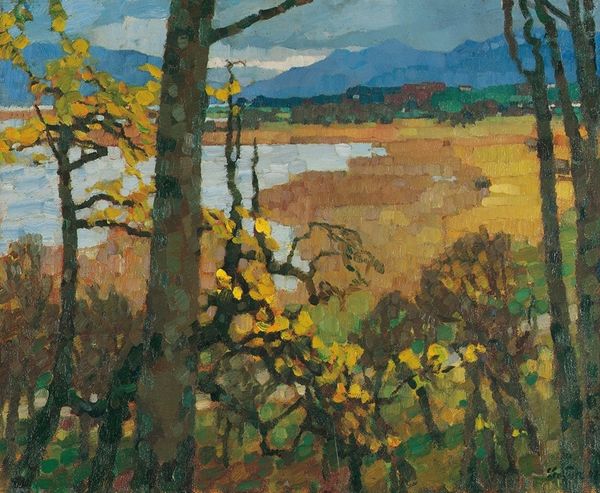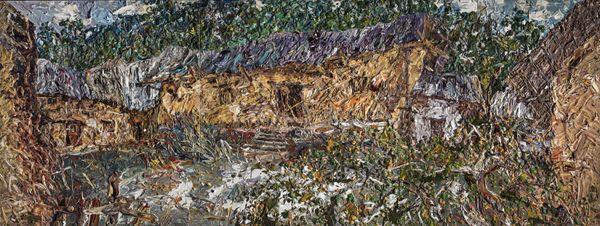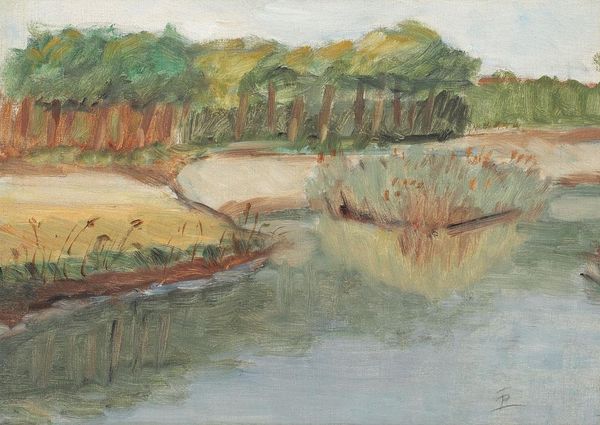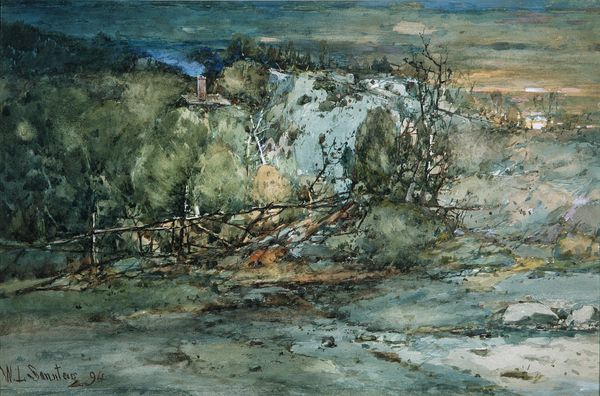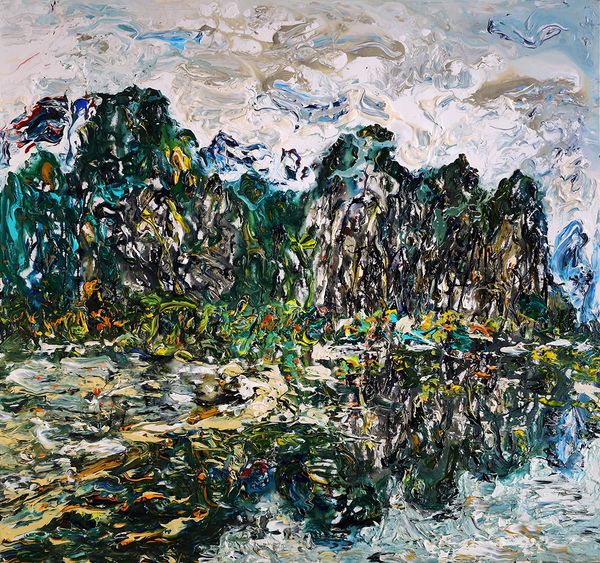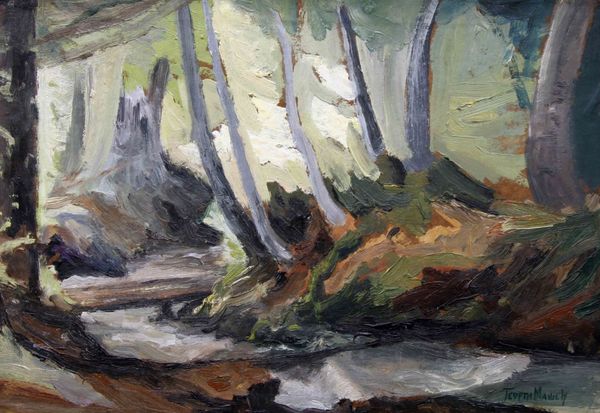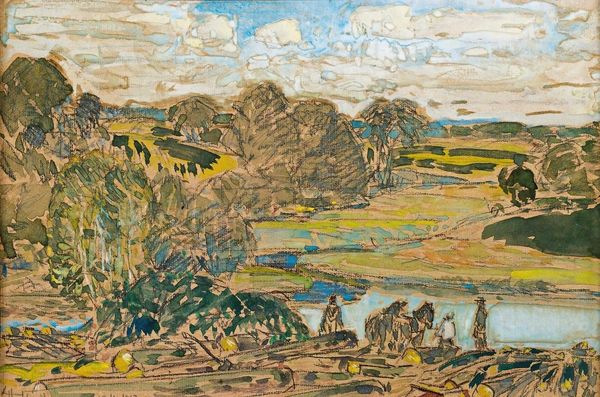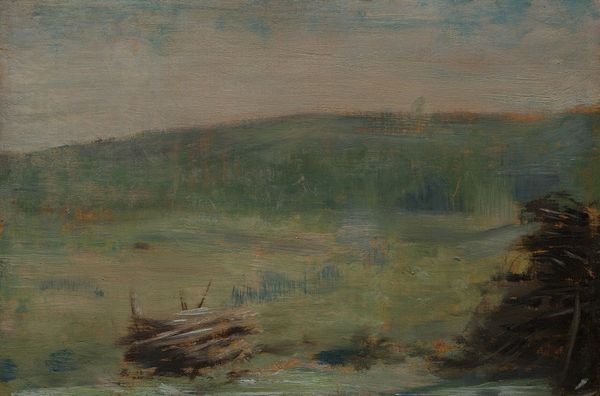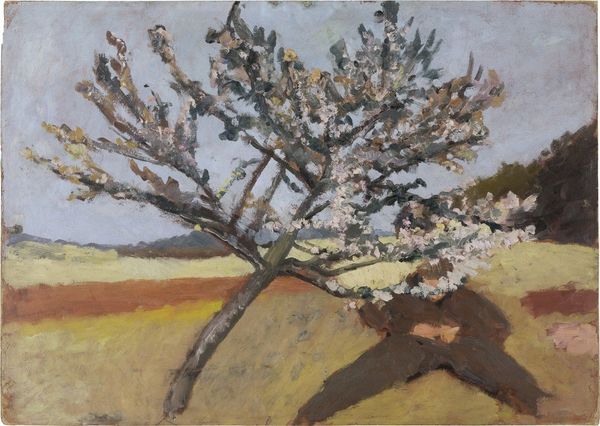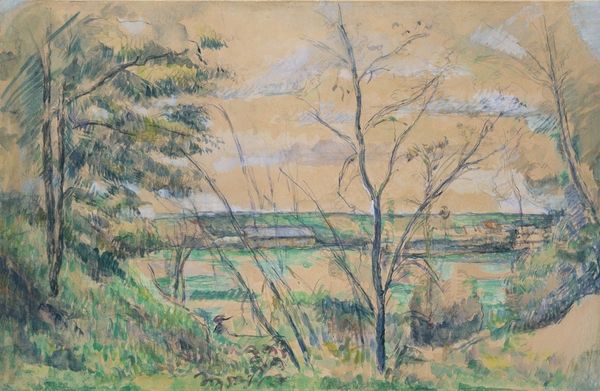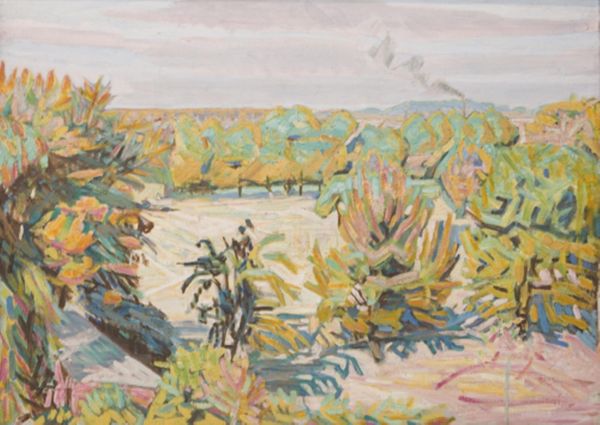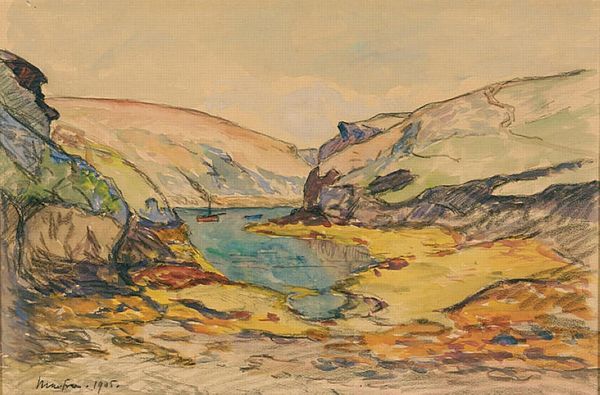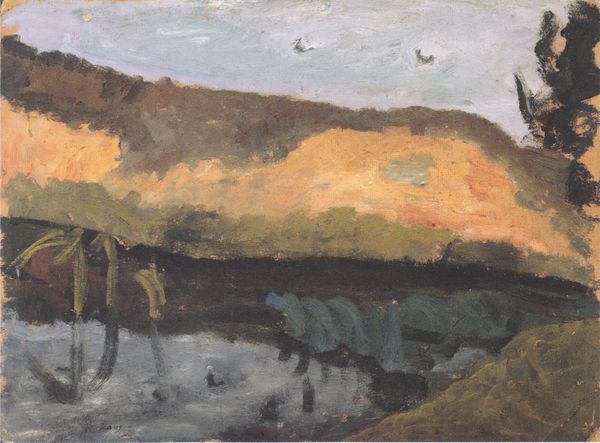
Dimensions: support: 1452 x 1213 mm
Copyright: © Tate | CC-BY-NC-ND 4.0 DEED, Photo: Tate
Editor: This is Peter Coker’s "The Gorse Bush," held at the Tate. The application of paint is incredibly thick, quite tactile. What strikes you about the composition? Curator: The structural integrity of the bush itself. Note how Coker employs impasto, building up layers to create a textured surface that mirrors the dense, thorny nature of the gorse. Editor: The impasto is very noticeable. Is there something to be said about the colors? Curator: Indeed. Consider the juxtaposition of the ochre and brown hues of the bush against the cool blues and greens of the background. This chromatic tension enhances the visual depth. Editor: I hadn't considered that chromatic tension. Curator: Precisely! Coker masterfully uses color to define space and form. Editor: Thanks! That’s a good point to close on.
Comments
Join the conversation
Join millions of artists and users on Artera today and experience the ultimate creative platform.
tate 6 months ago
⋮
This is one of a number of paintings the artist made from drawings after visiting Audierne in Brittany in 1957. Apart from the gorse, he made notes and drawings of a lighthouse, the sea, fields, stone-walls and vegetable plots. The paintings were exhibited the same year in his second one-man exhibition at the Zwemmer Galleries. The companion work to this painting is 'Bracken and Gorse' belonging to Birmingham City Art Gallery. As in 'Man Carrying a Pig' 1955 which is also in the Tate's collection, Coker used board as his support, modelling his forms in thick paint. He has compared the texture of the tangled mass of twigs and branches in this painting to his encrusted surfaces of previous years. Gallery label, August 2004
